May 26, 2021, was the first lunar eclipse in three years—although it was only barely total, with the moon completely inside Earth’s shadow for just 14 minutes or so. But, as usual, I would bite off more than I could chew.
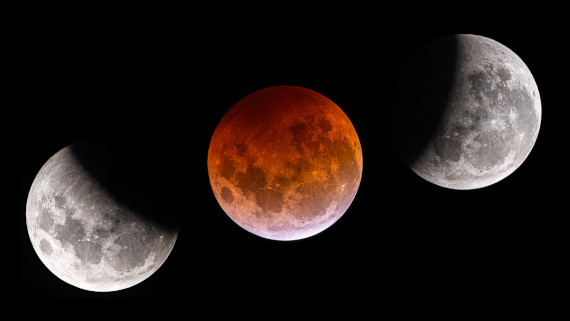
Composite image with the moon correctly positioned relative to Earth’s shadow.
Preparation
I had a relatively new Evostar 150mm refractor on loan from Sky-Watcher Australia and a rental Sony A7III, both of which I was keen to test out, but up until the weekend before the eclipse I had done no testing or meaningful planning—hardly ideal preparation. I had also never used the larger EQ8 mount in a portable capacity outside my observatory before. I’d hoped to at least observe and photograph from home, but along with testing that showed how unprepared I was, the weekend also revealed that the forecast for midweek was a major cold front and southwesterly blast.
Weather
Although the weather models gave some indication of skies clearing behind the front at mid-eclipse, getting gear ready requires hours of clear sky beforehand. I also regretted not travelling to ensure clear skies during previous eclipses, so decided I would head east of Canberra and the great dividing range to have the greatest chance of uninterrupted clear skies for this one.
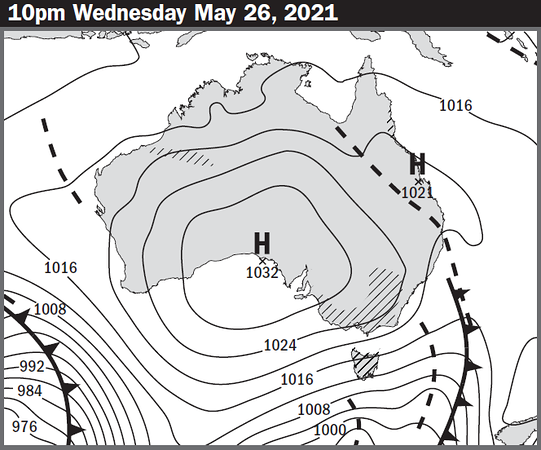
Synoptic forecast for eclipse time—stong southwesterly airflow behind a vigourous cold front.
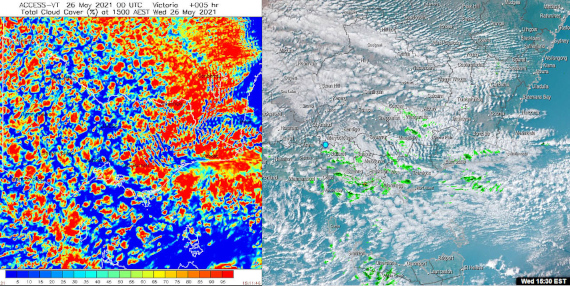
ACCESS model for 3 p.m. on eclipse day and corresponding visible satellite image—a good match.
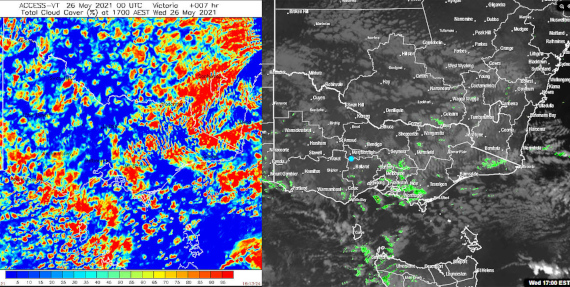
ACCESS model for 5 p.m. on eclipse day and corresponding IR satellite image. Note the wave clouds forming in the lee of the mountain range in the model and satellite image.
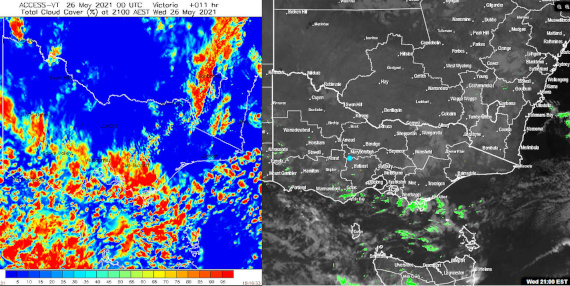
ACCESS model for 9 p.m., the time of mid-eclipse and corresponding IR satellite image.
In short, while I could see the prospects for visual observers in northern Victoria were quite promising, the few spots that might have cloudless skies from sunset (5 p.m.) through the full duration of the eclipse could not be known in advance. And this is exactly what transpired, with a short period of cloud at home near mid-eclipse and in many other locations in northern Victoria and New South Wales. However, I considered that the Great Dividing Range would provide a significant barrier in these types of southwesterly airflow, so I placed my bets on that option. (That’s my rationalisation for driving eight hours and nearly 800 km each way, and I’m sticking to it.)
Location
I had only limited success desktop scouting at home. I looked at Lake George and stopped there on the way, but it was windy, with lights in the parking area, light-polluted from Canberra and possibly not far enough to clear the cloud. So I headed farther east. I burned precious time scouting other side roads and eventually ended up at Larbert Road, just west of Braidwood. With permission from the landowners, I was able to park off the road with plenty of space and some foregrounds to play with.
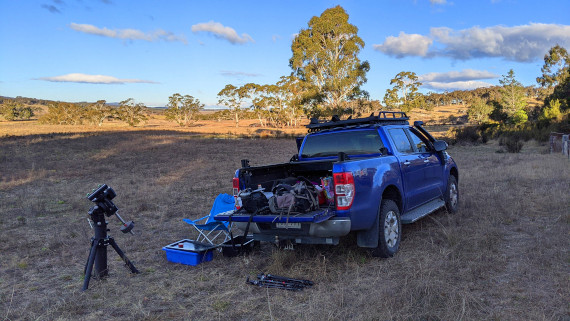
Observing location, Larbert Rd. near Braidwood, NSW.
Moonrise
Moonrise on eclipse night is always a moment of high anticipation. But location scouting had seriously crunched my available time to set up, so capturing the moonrise (and the whole event) was very rushed. Luckily, aside from being marginally out of focus, these turned out OK. My planning sheet had proposed capturing moonrise with my lovely Pentax 300mm lens, but that piece of kit wasn’t ready at the required moment.
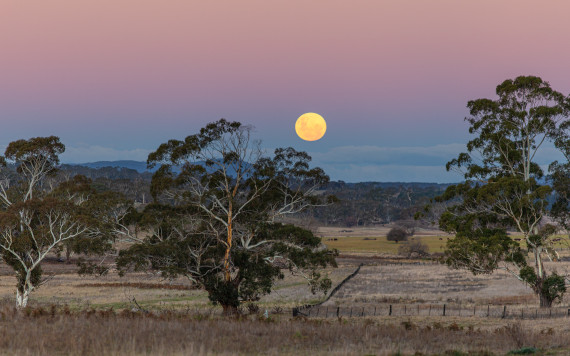
Moonrise on eclipse night. Canon 6D with 200mm lens. Exposure 1/200, f/2.8, ISO 200.
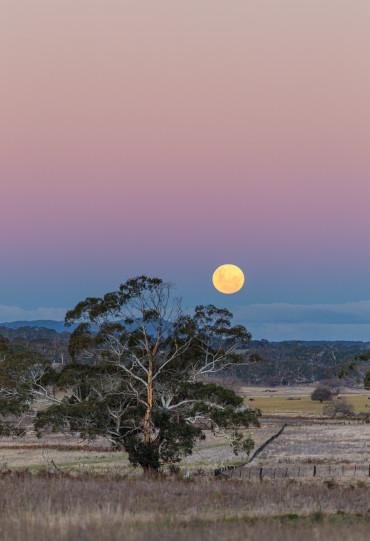
Alternate composition
Eclipse Composite
Widefield composite images of eclipses can be captured with relatively inexpensive gear, so I’m always keen to capture one. In this case, with the eclipse not happening until the moon was high in the sky, it was a bit of a compromise to forgo the wider view and instead use a slightly longer focal length and capture twilight colours—but only during the first stage of the eclipse. In actual fact, that choice happened somewhat by accident in the rush. Thanks to my good friend Geoff Adams for the 6D used here.
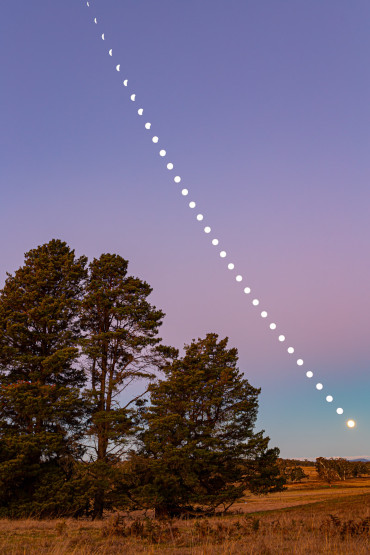
Canon 6D, 35mm lens, f/4 and ISO 200. Background exposure 0.4 seconds, individual “moons” with an exposure of 1/10.
Through the Telescope
Obviously the main game was about the telescopic images. What a drama capturing these shots were: a telescope and camera combination that I was barely familiar with, operating at 1900 mm focal length with very little margin for error in the framing.
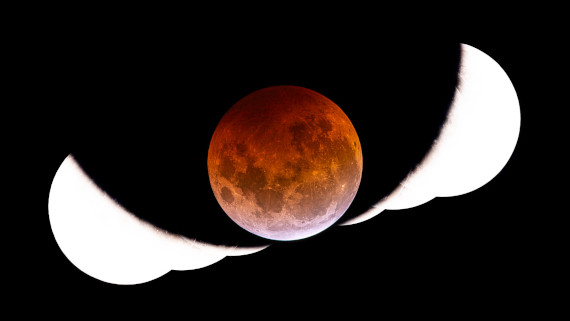
Lunar eclipse composite showing Earth’s shadow. Evostar 150 mm and Takahashi 1.6x extender (1900 mm, f/13, ISO 200). Exposures speeds of 1/15 and 4 seconds for eclipsed moon.
In the sky opposite the sun, Earth actually projects a shadow out into space. During a total lunar eclipse, the moon as it moves around its orbit actually passes slowly through this shadow. The moon transitions from blazing bright illuminated directly by the sun, to being faintly illuminated only by the amount of sunlight that gets refracted through Earth’s atmosphere into the otherwise dark shadow. The different exposure times used for different images can confuse this view. In the composite images above, each frame of the moon is faithfully aligned relative to the shadow that it is moving through. If there were a bright star in the images, it would be stacked in the same spot even though the moon itself is moving relative to the background sky and stars.
In theory, one day I could make a full high-resolution timelapse of this sequence of images. But my head hurts just thinking about how time-consuming it would be to combine and align all the frames required.
Moon in the Milky Way
Lunar eclipses in winter are special, as they place the moon near the centre of the Milky Way. The experience of the sky going from blazing bright full moonlight to a dark winter sky, revealing the full extent of the Milky Way, is truly impressive. It’s still difficult to capture the scene on camera, as the moon tends to overexpose, but here’s the general idea. This was supposed to be captured with a QHY367C CMOS camera, but that part was also not rehearsed and the battery on the laptop died just after I had focused and framed the shot. And totality was fast finishing. So I quickly grabbed the 6D camera, realising that the Moon had probably long since moved out of the composite image frame, and threw it together with the 85mm lens on my trusty old Vixen GP-DX mount instead. These images extended well into the partial phases but still captured the overall goal.
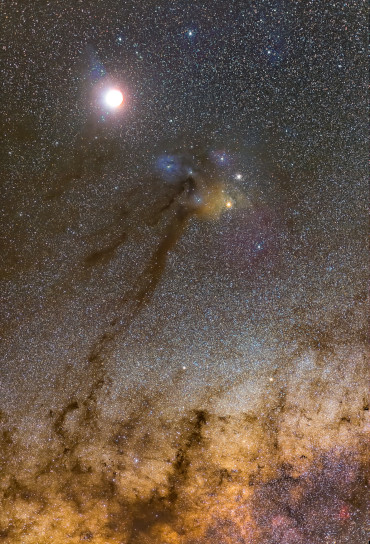
Canon 6D and 85mm lens. Stack of 40 images, each 30 seconds at f/2.2 (20 minutes total).
Timelapse
The final camera, my Canon 5D Mark IV, was dedicated to capturing timelapse footage, to show the transition from light to dark and ideally reveal the Milky Way. This has been combined with some high-res (but overexposed) video of moonrise through the telescope. There’s some dew on the lens here, too, but otherwise it turned out pretty nice. If you only watch half, make sure it’s the second.
Heading Home
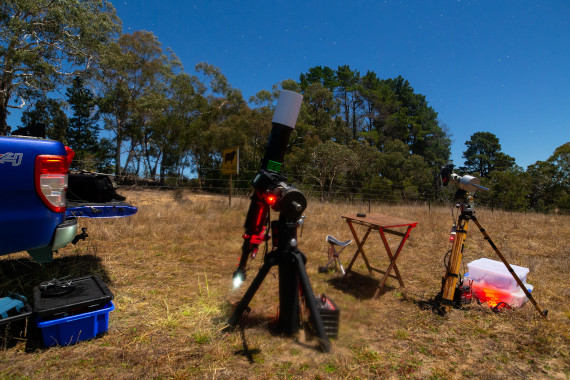
Main telescope on EQ8 and widefield setup on Vixen GP-DX, under full moonlight at the end of the eclipse.
I booked a motel room in Queenbeyan and crawled into bed after 1 a.m. Meanwhile, the COVID-19 situation was developing rapidly back home in Victoria. At a press conference later that week, the state government announced we would be heading into lockdown for seven days that night. In between stopping for work meetings on the side of the road, I duly applied for my travel permit to head back from NSW/ACT into lockdown at home in Vic. Thank goodness the eclipse wasn’t a week later.
For Further Training on Night Sky Photography:
Capturing star trails and other night sky scenes is truly one of the most technically difficult forms of photography. This popular in-depth eBook, Shooting Stars, written by astrophotography award winner Phil Hart, will show you how to shoot your own stunning images of the moon and the stars with just your digital SLR and a tripod.
It’s a reference you’ll keep coming back to and will help even professional photographers learn more about their camera and how to use it at night.
Found here: Shooting Stars – How to Photograph the Moon & Stars
Like This Article?
Don't Miss The Next One!
Join over 100,000 photographers of all experience levels who receive our free photography tips and articles to stay current:
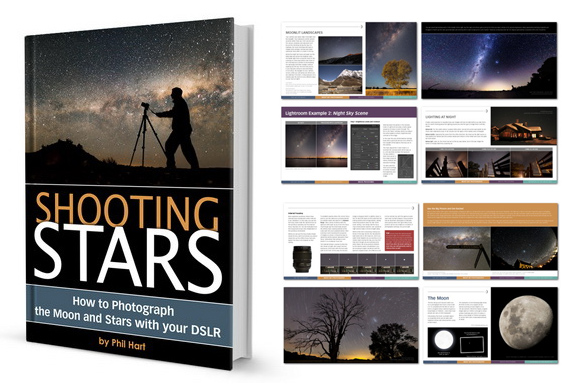






Leave a Reply